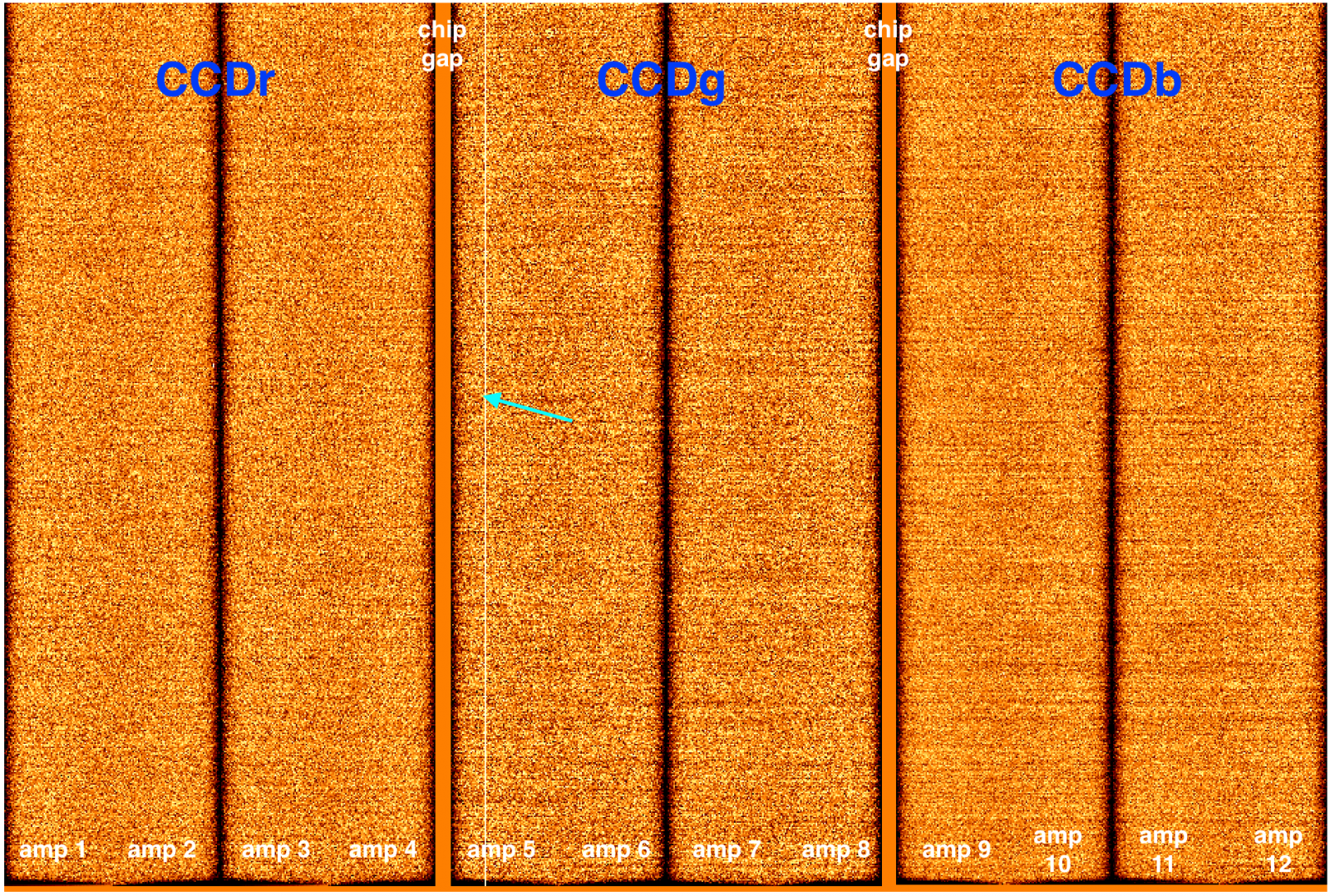The GMOS-N detector issue reported on March 2 has largely been resolved by the full thermal cycle performed between March 2 and 3. The extended bright columns on amplifiers 7 and 12 are no longer present. The narrow bad column of hot pixels on amplifier 5 persists and saturates in longer science exposures. The following figure shows the hot column in an overscan-subtracted bias image (as marked by the blue arrow).

GMOS-N users are advised to choose an appropriate dither strategy minimizing the effects of the hot column on their science data and/or to place targets or spectral features of interest on other parts of the detector. For dithers we recommend assuming a column width of 5 pixels both in binning 1 and 2. In binning 2, this corresponds to a spatial dither size of at least 0.81" in p (across the detector columns) and a spectral dither size of at least 0.26 nm for B1200, 0.38 nm for R831, 0.5 nm for B600, and 0.74 nm for R400. Since the GMOS-N chip gaps are much wider than the new hot column, any dithers used to cover the inter-chip regions will be sufficient. (A broadening of the hot column feature beyond 5 pixels - up to approximately 9 pixels - has been observed in science exposures for the first ~80 (binning 2) detector rows.)
Data observed since 20220304 (UT) should be reduced using biases taken since the same UT date. Updated bad pixel masks for the new hot column will be provided as soon as they are available. Please also note that saturation in the hot column has been seen to cause saturation banding on amplifier 5. A first assessment shows that the banding cancels out well during overscan-subtraction, similar to the known GMOS-N saturation banding caused by saturated stars.